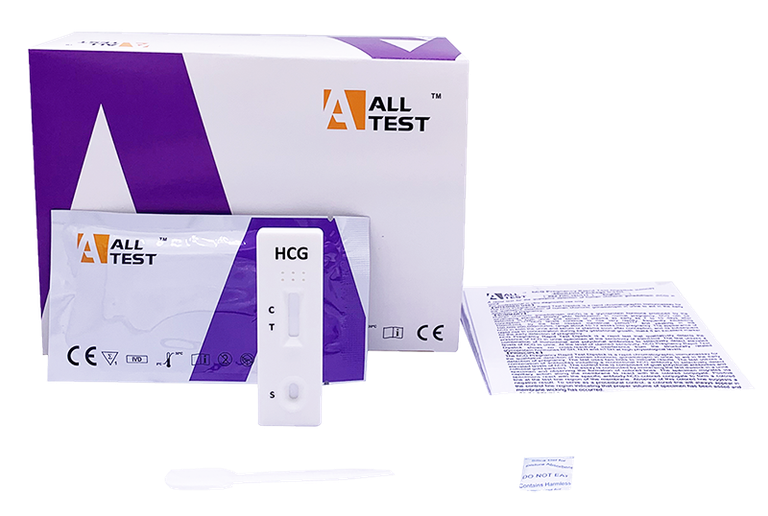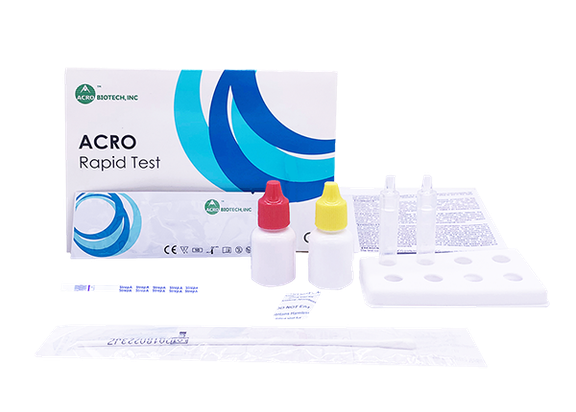STANDARD M10 Flu/RSV/SARS-CoV-2 Test
STANDARD M10 Flu/RSV/SARS-CoV-2 test is a multiplex real-time RT-PCR test intended for use with STANDARD M10 system for the qualitative detection of Influenza A, Influenza B, RSV and SARS-CoV-2 nucleic acids in human nasopharyngeal swab collected from individuals suspected of a respiratory disease by their healthcare provider.

Generally
The STANDAR M10 Flu/RSV/SARS-CoV-2 test is an in vitro diagnostic real-time RT-PCR test that aids in the simultaneous detection and differentiation of Influenza A, Influenza B, RSV, and SARS-CoV-2. The STANDARD M10 test cartridge contains primers, probes and internal control (IC) used in RT-PCR for the in vitro qualitative detection of Influenza A, Influenza B, RSV viral RNA, and SARS-CoV-2 ORF1ab gene and N gene in nasopharyngeal swab (VTM/UTM) samples.
STANDARD M10 tests are used in combination with STANDARD M10 system consisting of a console (user interface) and one or more modules (cartridge analysis function). The system is a modular random access platform which can be easily scaled with up to 8 modules, offering a customized throughput.
Easy and simple test workflow
• All-in-one cartridge (nucleic acid extraction and PCR amplification)
• Minimal hands-on time, results available in 60 min
• Intuitive touch screen user interface
• Automated result interpretation, amplification curves provided
STANDARD M10 benefits
• Versatile and flexible solution ― suitable for any healthcare settings
• RT-PCR technology in one system
• Multiplex capability, with up to 11 targets + internal control
• Random access, scalable with up to 8 modules
Technical data
| Products available |
|
| Use | For in vitro diagnostic use |
| Method | Real-time PCR amplification |
| Sample type | Nasopharyngeal swab (VTM/UTM) |
| Instrument information |
|
| Time to result | 60 min |
| Reading of the result | Automatic |
| Storage | Between +2 and +28 °C |
| Clinical sensitivity | Influenza A: 98.18% (108/110) [95% CI: 93.59% 99.78%], Influenza B: 98.91% (91/92) [95% CI: 94.09% 99.97%] RSV: 98.78% (81/ [95% CI: 9 4 0 9% 99.97%] SARS-CoV-2: 96.49% (165/171) [95% CI: 96.69% 99.98%] |
| Clinical specificity | Influenza A: 100.00% (535/535) [95% CI: 99.31% 100.00%] Influenza B: 99.82% (552/553) [95% CI: 99.00% 100.00%] RSV: 100.00% (563/563) [95% CI: 00 % 100.00%] SARS-CoV-2: 98.73% (468/474) [95% CI: 97.72% 99.53%] |
Transportation | Between +2 and +28°C |
| Size and weight | 317 x 130 x 81 mm, 1.04 kg |
| Additionally needed | STANDARD M10 instrumentation, transfer pipette, swabs, transport media, external controls |
| Country of origin | South Korea |
| Registration | CE IVD |
About influenza A and B, RSV and SARS-CoV-2
Influenza is a highly contagious and acute viral infection of the respiratory tract caused by an influenza virus, which has been circulating in the population worldwide for a long time. Three types of influenza viruses affect people and yearly epidemics are caused by type A and B. Type A viruses are the most prevalent. The clinical symptoms by Type A viruses are typically more severe than symptoms caused by Type B viruses.
RSV (Respiratory syncytial virus) also occur throughout the world, and in each location, it tends to peak as yearly winter outbreaks. The virus lives inside the cells lining the respiratory system, causing swelling of this lining coupled with the production of large amounts of excess mucus. In adults, this shows up as a bad, lingering cold with thick nasal congestion and a deep, productive cough. In infants, however, the excess mucus can be enough to plug their small airways or bronchioles, resulting in a severe illness called bronchiolitis that requires hospitalization.
Acute respiratory infection can be caused by a variety of viruses and bacteria. The recently emerged SARS-CoV-2 causes acute respiratory infection. The SARS-CoV-2 outbreak in Wuhan, China has widely spread out into the world since its appearance in 2019. Common signs of a person infected with SARS-CoV-2 include respiratory symptoms, fever, cough, shortness of breath, and dyspnea. In more severe cases, the infection generates pneumonia, acute respiratory syndrome, kidney failure, or even death.
The test results are only for clinical reference and cannot be used as a basis for confirming or excluding cases by itself.


